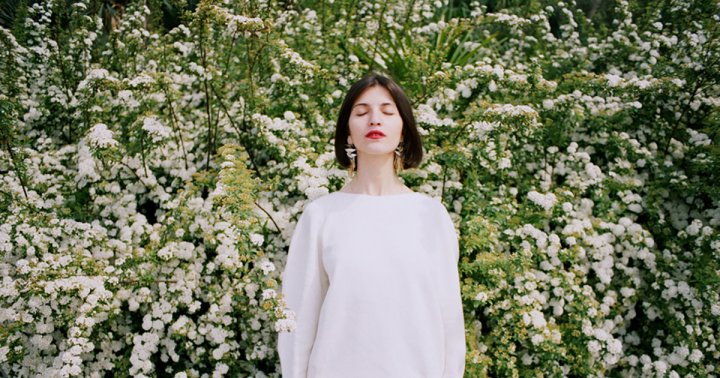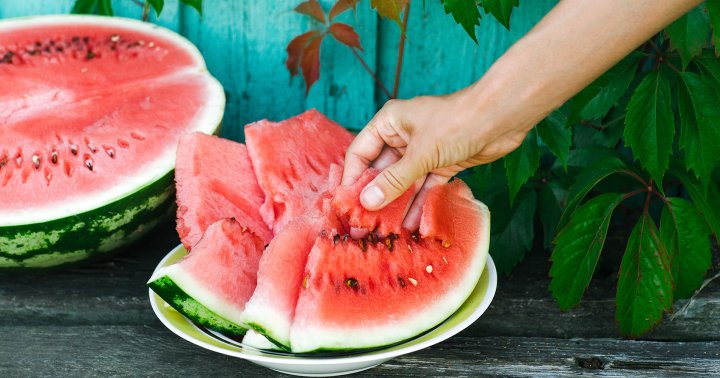Why happiness and laughter are actual Buddhist teachings. The Sutra on Happiness, the Tathagata’s teaching “This is the great happiness!”
We often see monks of all Buddhist traditions laughing. Rinpoche’s, monks, nuns, teachers, the Dalai Lama — they all have a ready belly laugh. Are they just happy? Or, is happiness itself, the teaching? In the “Sutra on Happiness”...
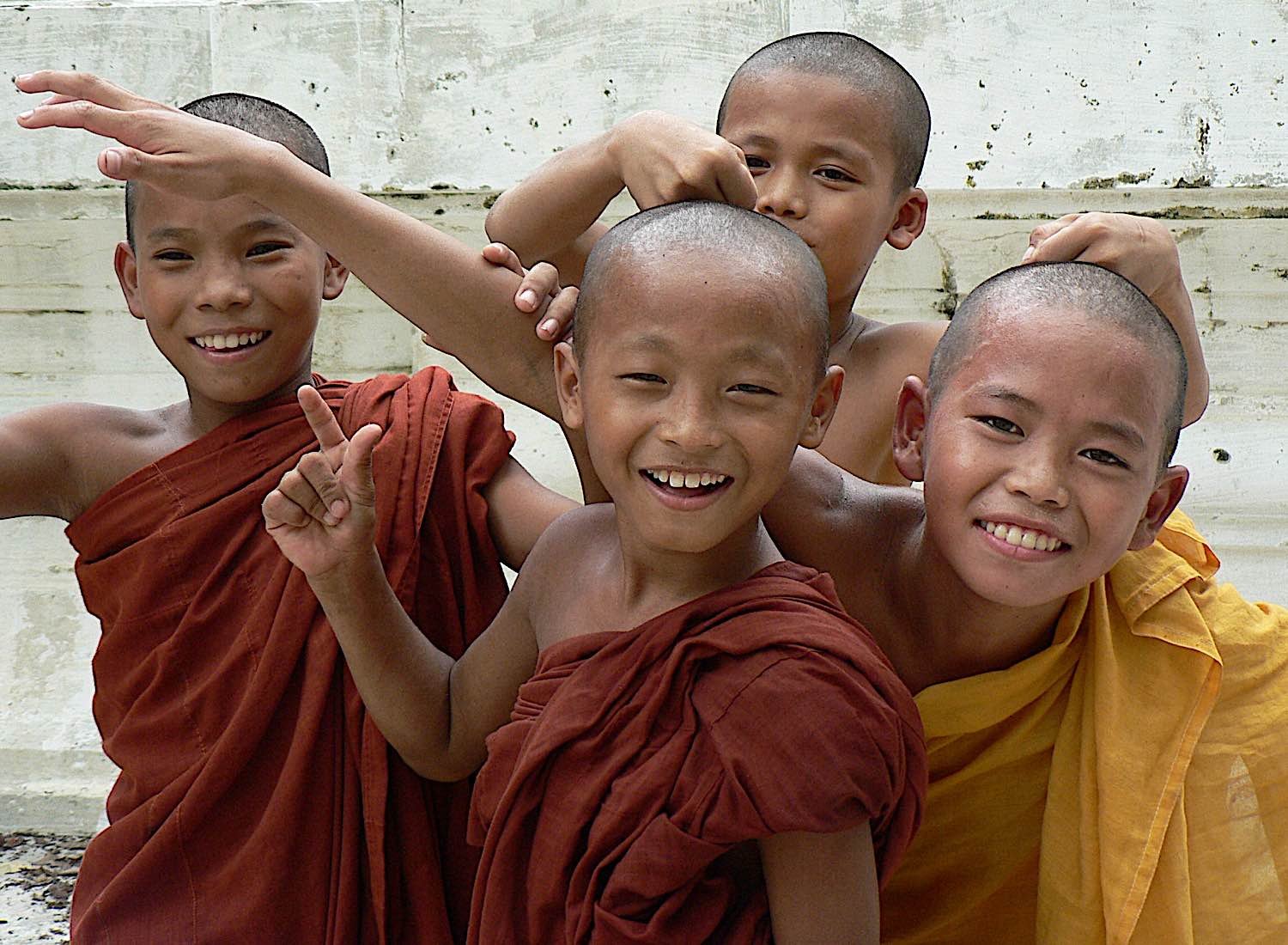
We often see monks of all Buddhist traditions laughing. Rinpoche’s, monks, nuns, teachers, the Dalai Lama — they all have a ready belly laugh. Are they just happy? Or, is happiness itself, the teaching?
In the “Sutra on Happiness” Shakyamuni Buddha taught the “great happiness.”

Four happy novice Buddhists.
“To be humble and polite in manner,
To be grateful and content with a simple life,
Not missing the occasion to learn the Dharma
This is the great happiness.”
— Shakyamuni Buddha
Laughter, demonstrating happiness, is indeed, teaching.
Have you noticed how the Dalai Lama projects authority through laughter, with his charming chuckle and warm smile at every stop, in every situation?
He’s always ready with the joke that makes large crowds gasp for breath as they laugh.
This isn’t just an act of empathy with the people around him. Laughter connects us to the very universe itself at a deep level. This power is not limited to enlightened teachers.
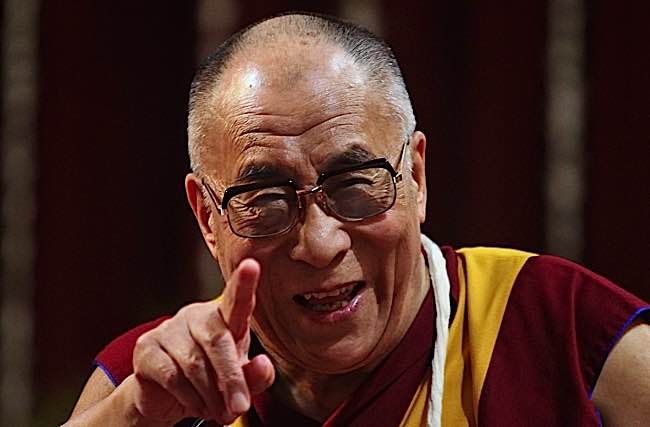
His Holiness the Dalai Lama at a teaching — laughing.
In the so-called Happiness Sutra, the Mangala Sutta, Shakyamuni Buddhis is asked:
“Many gods and men are eager to know
what are the greatest blessings
which bring about a peaceful and happy life.
Please, Tathagata, will you teach us?”
The entire sutra is then dedicated to the many ways to be happy, with pithy topics such as:
“To live honestly, generous in giving,
to offer support to relatives and friends,
living a life of blameless conduct —
this is the greatest happiness.
In monasteries, although there are serene scenes of calm silence and meditation, you are as likely to hear great belly laughs as monks debate Dharma:

During a Dharma debate, monks laugh at each other’s answers, here at Sera Jey Monastery.
Budai, the Laughing Monk
Most famous of all the monks in China, was Budai, the so-called “Laughing Monk” who is the “model” of the “laughing Buddha” statues commonly seen in souvenir shops. This is not actually Maitreya, or a Laughing Buddha” it is the monk called Budai, who was supremely devoted to Maitreya Buddha. (Chinese: 布袋; pinyin: Bùdài; Korean: 포대, romanized: Podae; Japanese: 布袋, romanized: Hotei) was a Chinese monk who is often identified with and venerated as Maitreya Buddha in Chan Buddhism. With the spread of Chan Buddhism, he also came to be venerated in Vietnam, Korea, and Japan.
His laugh, is almost iconic of the Happy Buddhist.
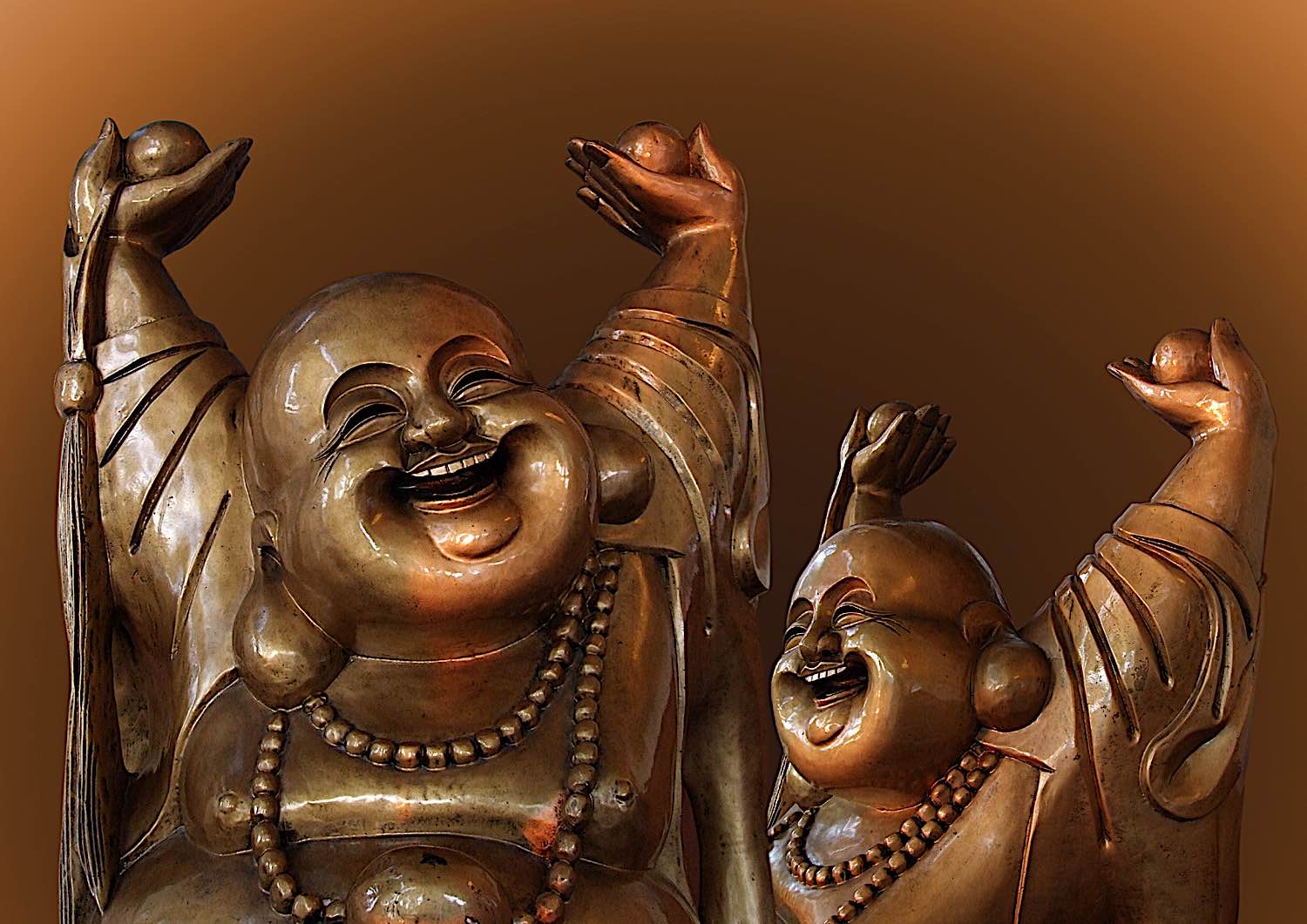
Budai, the laughing monk who figure is often called the Laughing Buddha.
Regardless of tradition, from Japan to China to Thailand to Canada to Cambodia — all Buddhist temples — you are as likely to hear laughter as silent meditation. Buddha taught laughter and happiness. As with the “famous flower sermon” where Buddha held up a simple flower so that his disciple could understand, laughter is an equally potent teaching tool. It is also a blueprint for Buddhist living.
In an essay, “The Laughing Buddha Humour and the Spiritual Life“, Dennis Sibley writes:
“Humour lies at the heart of Buddhist thought and practice. Indeed, according to Buddhist history, it was a central factor in the enlightenment experience of the monk Kashyapa. As you may recall, during one of his discourses the Buddha fell silent and held up a single golden flower. Kashyapa responded not with ideas or words but with a smile. From this smile, this spontaneous opening of the heart-mind, this direct transmission of the truth from one being to another, came the Zen tradition.”
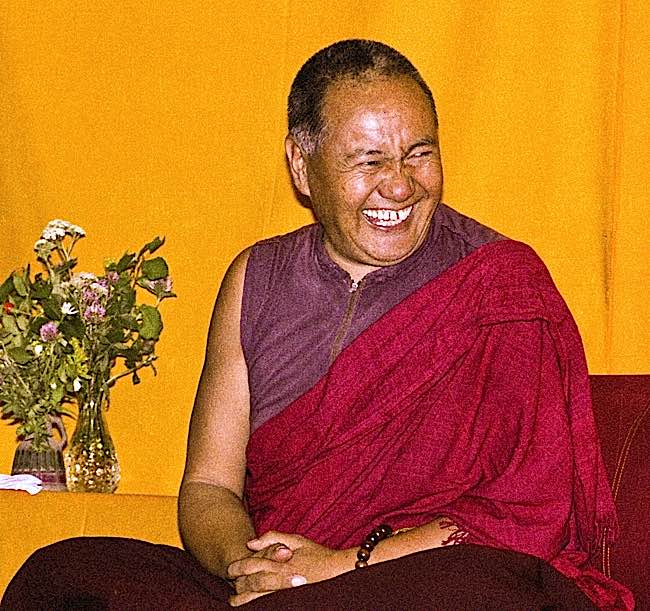
Lama Yeshe was famous as a pioneer who helped introduce many westerners to Buddhist Vajrayana — and as his many students can attest, he loved to laugh!
Types of Laughter in Buddhism
There are even Sanskrit terms in the teachings for the different types of laughter (from “Smiling Buddha, Did he Laugh?):
Atihasita, uproarious laughter accompanied by doubling over Apahasita, loud laughter that brings tears to the eyes Upahasita, a more pronounced laughter associated with some body movement Vihasita, a broader smile accompanied by modest laughter Hasita, a smile which slightly reveals the tips of the teeth Sita, a faint smile. This one is also known as the Buddha smile, denoting an inner attitude of detachment “in the world, but not of the world.”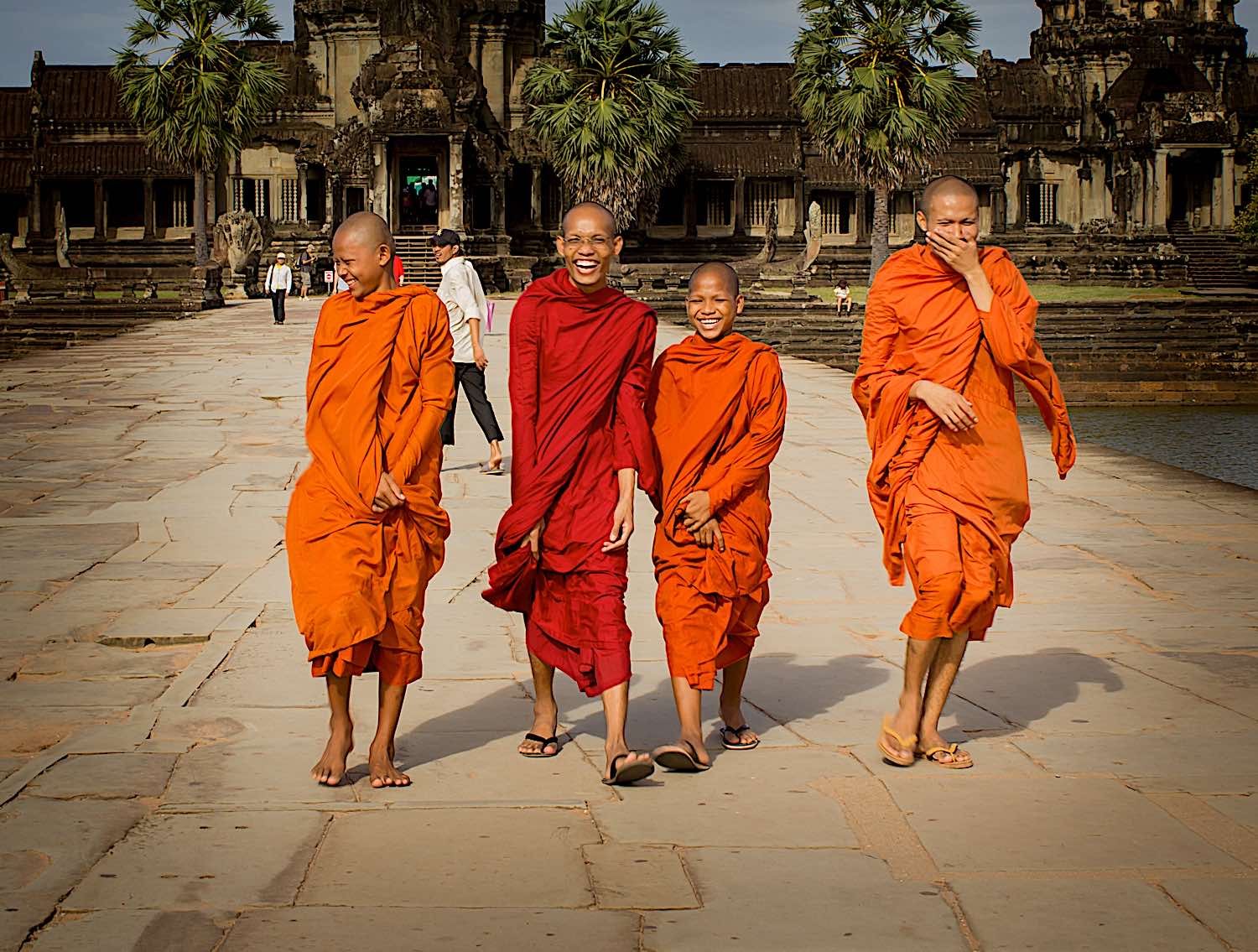
Buddhist Monks laughing at Angkor Wat in Cambodia. Laughter is contagious amongst Buddhists.
Laughter Teaches Emptiness
For those who “fear” the emptiness of enlightenment —often misunderstood to mean nothingness of extinction—laughter teaches us what true emptiness is. In that moment of pure laughter, our mind is still. It is empty. But it is bliss. It is also full of everything, boundless, empty of ego.
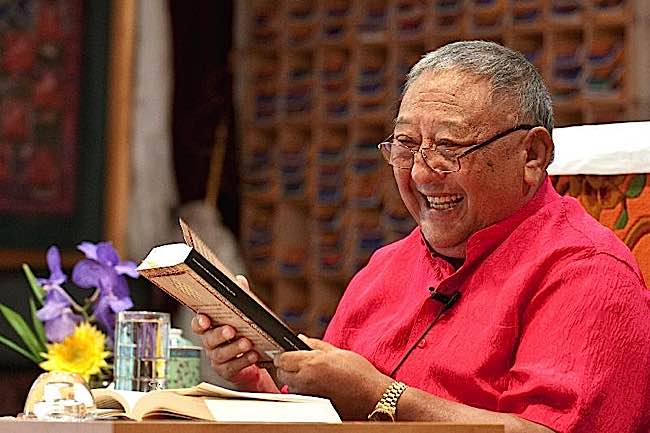
The beloved late Gelek Rinpoche of Jewel Heart often laughed during teachings.
Laughter, in Buddhism, is a very powerful daily meditation. I think of the innocent child, always laughing and giggling, smiles coming as naturally as tears, but everything spontaneous and real. Isn’t this the goal of meditation? To seek what is the inner truth. What is real. To be in touch mindfully with the real you?
Tibetan teacher Longchenpa similarly aligns laughter with emptiness, albeit in a light-hearted way:
“Since everything is but an apparition, perfect in being what it is, having nothing to do with good or bad, acceptance or rejection, one may well burst out in laughter.”
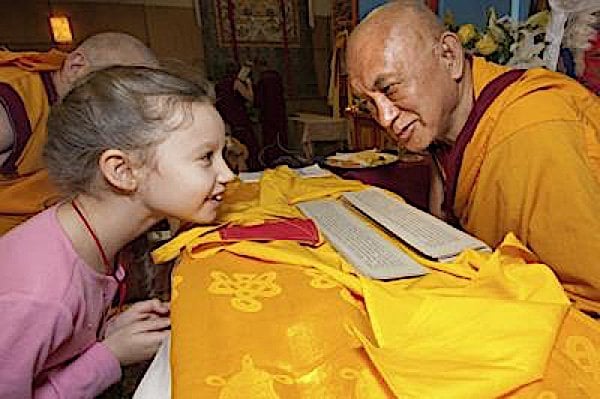
Lama Zopa with the children. Look at the brightness on both of their smiling faces. This is true wisdom.
The Childlike mind
Laughter brings us closer to the child-like mind. The child’s mind is not a greedy, grasping mind. The laughter of a child is full of wisdom. What happens between childhood and maturity, that we lose the spontaneous, ready, daily, hourly, minute-by-minute willingness to laugh? Stress, life, struggles, more stress, worry, clinging, on and on. But those who endured far more suffering than most of us—from Mahatma Gandhi to Mother Theresa to the Dalai Lama—were always the ones able to laugh and smile in any situation.
Laughter can make it easier to settle the mind for the serious business of meditation.

These child students at a Buddhist nunnery in Zanskar India are happy despite long winters and poverty.
Mangala Sutta, the Happiness Sutra
Among my favorite Sutras is the Mangala Sutra (Sutta), the Happiness Sutra. Although there are great commentaries, this Mangala Sutta is full of easy-to-follow advice. It makes a wonderful daily chant. Here, is the translated English version from the great Thich Nhat Hanh in verse form with rhythm, making it easy to chant as a daily or regular practice. For a commentary, I recommend “Awakening of the Heart: Essential Buddhist Sutras and Commentaries” by Thich Nhat Hanh. [1]
May all beings be happy and free from suffering. Here is the Mangala Sutra in full.
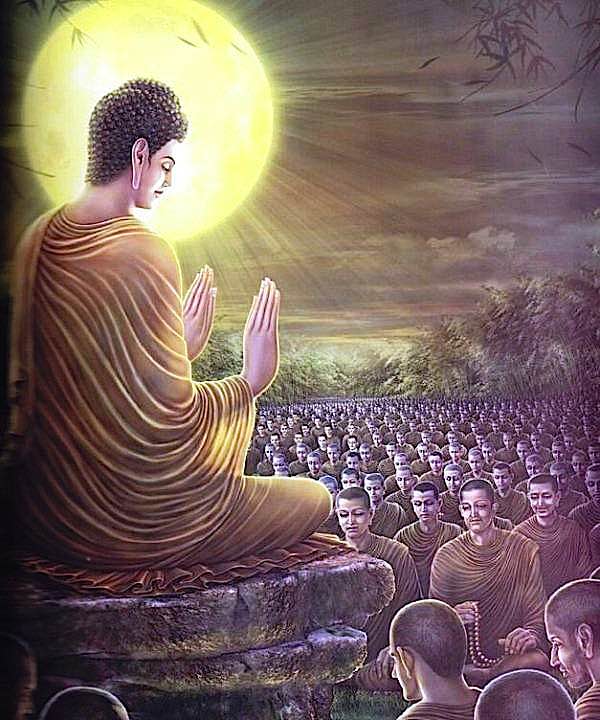
The Buddha teaching.
I heard these words of the Buddha one time when the Lord was living in the vicinity of Savatthi at the Anathapindika Monastery in the Jeta Grove. Late at night, a deva appeared whose light and beauty made the whole Jeta Grove shine radiantly. After paying respects to the Buddha, the deva asked him a question in the form of a verse:
“Many gods and men are eager to know
what are the greatest blessings
which bring about a peaceful and happy life.
Please, Tathagata, will you teach us?”
(This is the Buddha’s answer):
“Not to be associated with the foolish ones,
to live in the company of wise people,
honoring those who are worth honoring —
this is the greatest happiness.
“To live in a good environment,
to have planted good seeds,
and to realize that you are on the right path —
this is the greatest happiness.
“To have a chance to learn and grow,
to be skillful in your profession or craft,
practicing the precepts and loving speech —
this is the greatest happiness.
“To be able to serve and support your parents,
to cherish your own family,
to have a vocation that brings you joy —
this is the greatest happiness.
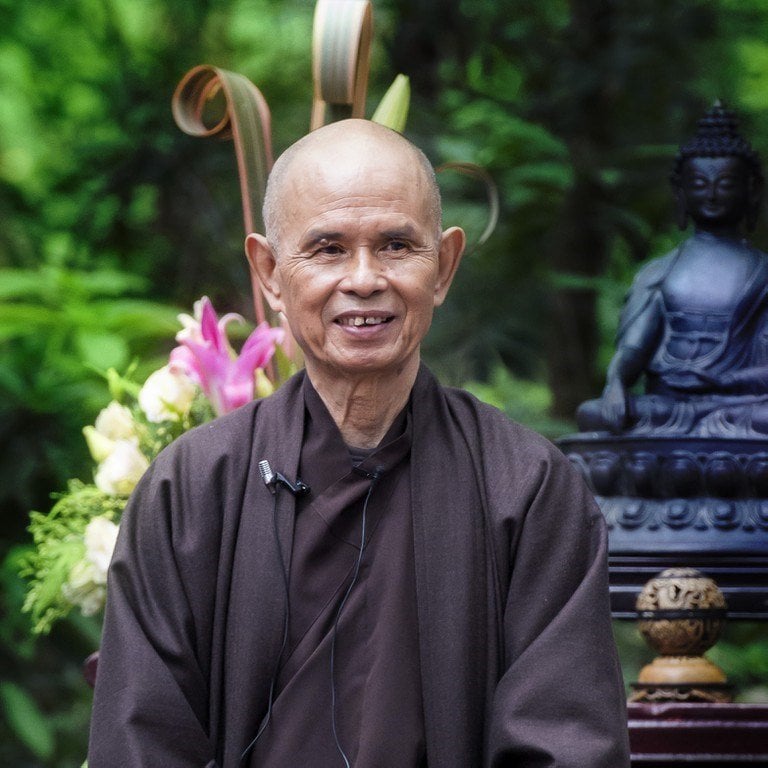
Affectionately known as Thay, Thich Nhat Hanh’s English translations of sutra is among the best.
“To live honestly, generous in giving,
to offer support to relatives and friends,
living a life of blameless conduct —
this is the greatest happiness.
“To avoid unwholesome actions,
not caught by alcoholism or drugs,
and to be diligent in doing good things —
this is the greatest happiness.
“To be humble and polite in manner,
to be grateful and content with a simple life,
not missing the occasion to learn the Dharma —
this is the greatest happiness.
“To persevere and be open to change,
to have regular contact with monks and nuns,
and to fully participate in Dharma discussions —
this is the greatest happiness.
“To live diligently and attentively,
to perceive the Noble Truths,
and to realize Nirvana —
this is the greatest happiness.
“To live in the world
with your heart undisturbed by the world,
with all sorrows ended, dwelling in peace —
this is the greatest happiness.
“For he or she who accomplishes this,
unvanquished wherever she goes,
always he is safe and happy —
happiness lives within oneself.”
Mahamangala Sutta, Sutta Nipata 1
NOTES
[1] Awakening of the Heart: Essential Buddhist Sutras and Commentaries, Thich Naht Hanh
Paperback: 544 pages Publisher: Parallax Press; Original edition (December 21, 2011) Language: English ISBN-10: 1937006115 ISBN-13: 978-1937006112
 JimMin
JimMin 








